Classic authors who wrote mainly during 1785-1936
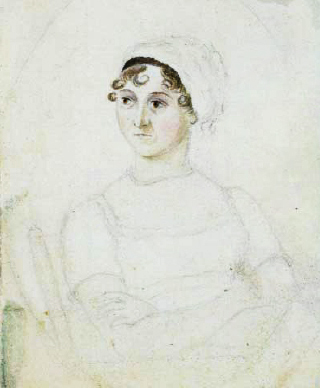 Jane Austen (16 December 1775 – 18 July 1817) was an English novelist, whose realism, biting social commentary and masterly use of free indirect speech, burlesque, and irony have earned her a place as one of the most widely read and most beloved writers in English literature. Austen's works critique the novels of sensibility of the second half of the eighteenth century and are part of the transition to nineteenth-century realism. From 1811 until 1816, with the release of Sense and Sensibility (1811), Pride and Prejudice (1813), Mansfield Park (1814) and Emma (1816), she achieved success as a published writer. Northanger Abbey (1817) and Persuasion (1817) were published posthumously.
Jane Austen (16 December 1775 – 18 July 1817) was an English novelist, whose realism, biting social commentary and masterly use of free indirect speech, burlesque, and irony have earned her a place as one of the most widely read and most beloved writers in English literature. Austen's works critique the novels of sensibility of the second half of the eighteenth century and are part of the transition to nineteenth-century realism. From 1811 until 1816, with the release of Sense and Sensibility (1811), Pride and Prejudice (1813), Mansfield Park (1814) and Emma (1816), she achieved success as a published writer. Northanger Abbey (1817) and Persuasion (1817) were published posthumously.
 H C Bailey: Henry Christopher Bailey (1878 – 1961) was an English author of detective fiction. Bailey wrote mainly short stories featuring a medically-qualified detective called Reggie Fortune. Fortune's mannerisms and speech put him into the same class as Lord Peter Wimsey but the stories are much darker, and often involve murderous obsession, police corruption, financial skulduggery, child abuse and miscarriages of justice. Although Mr Fortune is seen at his best in short stories, he also appears in several novels.
H C Bailey: Henry Christopher Bailey (1878 – 1961) was an English author of detective fiction. Bailey wrote mainly short stories featuring a medically-qualified detective called Reggie Fortune. Fortune's mannerisms and speech put him into the same class as Lord Peter Wimsey but the stories are much darker, and often involve murderous obsession, police corruption, financial skulduggery, child abuse and miscarriages of justice. Although Mr Fortune is seen at his best in short stories, he also appears in several novels.
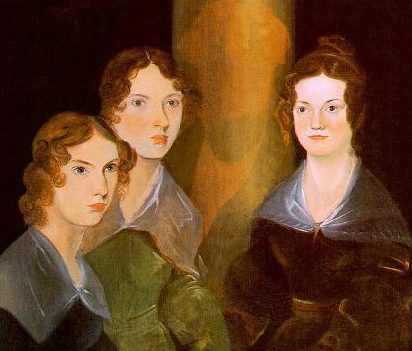 Bronte sisters: The Brontë sisters, Charlotte (21 April 1816 – 31 March 1855), Emily (30 July 1818 – 19 December 1848) and Anne (17 January 1820 – 28 May 1849), were English writers of the 1840s and 1850s. Their novels caused a sensation when they were first published and were subsequently accepted into the canon of great English literature. They were first published, at their own expense, in 1846 as poets under the pseudonyms Currer, Ellis and Acton Bell. Charlotte's Jane Eyre, Emily's Wuthering Heights and Anne's Agnes Grey were released in 1847. The novels attracted great critical attention and steadily became best-sellers, but the sisters' careers were shortened by ill-health. Emily died the following year before she could complete another novel, and Anne published her second novel, The Tenant of Wildfell Hall, in 1848, a year before her death. Charlotte's Shirley appeared in 1849 and was followed by Villette in 1853. Her first novel, The Professor, was published posthumously in 1857. Charlotte died at the age of 38 in 1855. Pic shows, From left to right: Anne, Emily and Charlotte.
Bronte sisters: The Brontë sisters, Charlotte (21 April 1816 – 31 March 1855), Emily (30 July 1818 – 19 December 1848) and Anne (17 January 1820 – 28 May 1849), were English writers of the 1840s and 1850s. Their novels caused a sensation when they were first published and were subsequently accepted into the canon of great English literature. They were first published, at their own expense, in 1846 as poets under the pseudonyms Currer, Ellis and Acton Bell. Charlotte's Jane Eyre, Emily's Wuthering Heights and Anne's Agnes Grey were released in 1847. The novels attracted great critical attention and steadily became best-sellers, but the sisters' careers were shortened by ill-health. Emily died the following year before she could complete another novel, and Anne published her second novel, The Tenant of Wildfell Hall, in 1848, a year before her death. Charlotte's Shirley appeared in 1849 and was followed by Villette in 1853. Her first novel, The Professor, was published posthumously in 1857. Charlotte died at the age of 38 in 1855. Pic shows, From left to right: Anne, Emily and Charlotte.
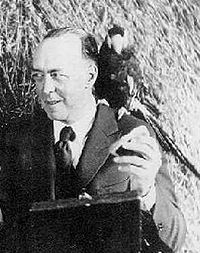 Edgar Rice Burroughs: Edgar Rice Burroughs (September 1, 1875 – March 19, 1950) was an American author, best known for his creation of the jungle hero Tarzan and the heroic Mars adventurer John Carter, although he produced works in many genres. His first story "Under the Moons of Mars" was serialized in The All-Story magazine in 1912. By the time the run of Under the Moons of Mars had finished he had completed two novels, including Tarzan of the Apes, which was published from October 1912 and went on to begin his most successful series. Burroughs also wrote popular science fiction and fantasy stories involving Earthly adventurers transported to various planets (notably Barsoom, Burroughs' fictional name for Mars, and Amtor, his fictional name for Venus), lost islands, and into the interior of the hollow earth in his Pellucidar stories, as well as westerns and historical romances.
Edgar Rice Burroughs: Edgar Rice Burroughs (September 1, 1875 – March 19, 1950) was an American author, best known for his creation of the jungle hero Tarzan and the heroic Mars adventurer John Carter, although he produced works in many genres. His first story "Under the Moons of Mars" was serialized in The All-Story magazine in 1912. By the time the run of Under the Moons of Mars had finished he had completed two novels, including Tarzan of the Apes, which was published from October 1912 and went on to begin his most successful series. Burroughs also wrote popular science fiction and fantasy stories involving Earthly adventurers transported to various planets (notably Barsoom, Burroughs' fictional name for Mars, and Amtor, his fictional name for Venus), lost islands, and into the interior of the hollow earth in his Pellucidar stories, as well as westerns and historical romances.
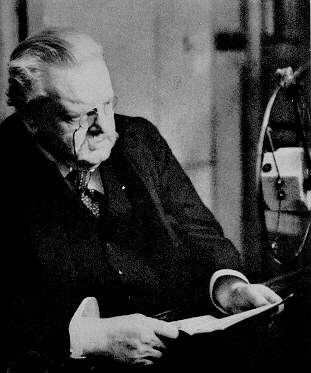 G K Chesterton : Gilbert Keith Chesterton (29 May 1874 – 14 June 1936) was one of the most influential English writers of the 20th century. His prolific and diverse output included detective fiction, fantasy, journalism, philosophy, poetry, biography, and Christian apologetics. Chesterton's most famous creation is Father Brown, a short, stumpy Catholic priest, with shapeless clothes and a large umbrella, and an uncanny insight into human evil. He makes his first appearance in the famous story "The Blue Cross" and continues through the five volumes of short stories, often assisted by the reformed criminal Flambeau.
G K Chesterton : Gilbert Keith Chesterton (29 May 1874 – 14 June 1936) was one of the most influential English writers of the 20th century. His prolific and diverse output included detective fiction, fantasy, journalism, philosophy, poetry, biography, and Christian apologetics. Chesterton's most famous creation is Father Brown, a short, stumpy Catholic priest, with shapeless clothes and a large umbrella, and an uncanny insight into human evil. He makes his first appearance in the famous story "The Blue Cross" and continues through the five volumes of short stories, often assisted by the reformed criminal Flambeau.
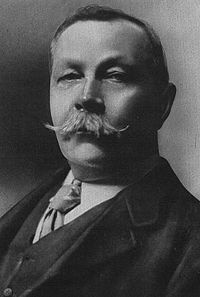 Arthur Conan Doyle : Sir Arthur Ignatius Conan Doyle, DL (22 May 1859 – 7 July 1930) was a British author most noted for his stories about the detective Sherlock Holmes, which are generally considered a major innovation in the field of crime fiction, and for the adventures of Professor Challenger. He was a prolific writer whose other works include science fiction stories, historical novels, plays and romances, poetry, and non-fiction. Conan Doyle wrote four novels and fifty-six short stories that feature Holmes. The stories cover a period from around 1875 up to 1907, with a final case in 1914. All but four stories are narrated by Holmes's friend and biographer, Dr. John H. Watson, two are narrated by Holmes himself and two others are written in the third person.
Arthur Conan Doyle : Sir Arthur Ignatius Conan Doyle, DL (22 May 1859 – 7 July 1930) was a British author most noted for his stories about the detective Sherlock Holmes, which are generally considered a major innovation in the field of crime fiction, and for the adventures of Professor Challenger. He was a prolific writer whose other works include science fiction stories, historical novels, plays and romances, poetry, and non-fiction. Conan Doyle wrote four novels and fifty-six short stories that feature Holmes. The stories cover a period from around 1875 up to 1907, with a final case in 1914. All but four stories are narrated by Holmes's friend and biographer, Dr. John H. Watson, two are narrated by Holmes himself and two others are written in the third person.
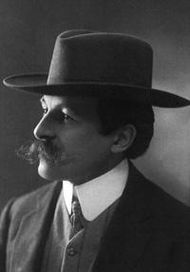 Maurice Leblanc: Maurice-Marie-Émile Leblanc (11 November 1864 - 6 November 1941) was a French novelist and writer of short stories, known primarily as the creator of the fictional gentleman thief and detective Arsène Lupin, often described as a French counterpart to Conan Doyle's creation Sherlock Holmes. There are twenty volumes in the Arsène Lupin series written by Leblanc himself, plus five authorized sequels written by the notorious mystery writing team of Boileau-Narcejac, as well as various pastiches. Arsène Lupin is a literary descendant of Pierre Alexis Ponson du Terrail's Rocambole. Like him, he is often a force for good, while operating on the wrong side of the law. Lupin is somewhat similar to A.J. Raffles and anticipates characters such as The Saint.
Maurice Leblanc: Maurice-Marie-Émile Leblanc (11 November 1864 - 6 November 1941) was a French novelist and writer of short stories, known primarily as the creator of the fictional gentleman thief and detective Arsène Lupin, often described as a French counterpart to Conan Doyle's creation Sherlock Holmes. There are twenty volumes in the Arsène Lupin series written by Leblanc himself, plus five authorized sequels written by the notorious mystery writing team of Boileau-Narcejac, as well as various pastiches. Arsène Lupin is a literary descendant of Pierre Alexis Ponson du Terrail's Rocambole. Like him, he is often a force for good, while operating on the wrong side of the law. Lupin is somewhat similar to A.J. Raffles and anticipates characters such as The Saint.
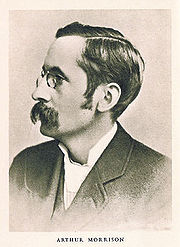 Arthur Morrison (Martin Hewitt) : Arthur George Morrison (November 1, 1863 London - December 4, 1945) was an English author and journalist, known for his realistic novels about London's East End and for his detective stories. Morrison produced detective short stories which emulated those of Arthur Conan Doyle about Sherlock Holmes. Morrison's Martin Hewitt was an imitation of Sherlock Holmes, but inverted: he was ordinary, short, good tempered and gladly cooperated with the police. Three volumes of Hewitt stories were published before the publication of the novel for which Morrison is most famous: A Child of the Jago (1896). The novel described in graphic detail living conditions in the East End including the permeation of violence into everyday life (it was a barely fictionalised account of life in the Old Nichol Street Rookery).
Arthur Morrison (Martin Hewitt) : Arthur George Morrison (November 1, 1863 London - December 4, 1945) was an English author and journalist, known for his realistic novels about London's East End and for his detective stories. Morrison produced detective short stories which emulated those of Arthur Conan Doyle about Sherlock Holmes. Morrison's Martin Hewitt was an imitation of Sherlock Holmes, but inverted: he was ordinary, short, good tempered and gladly cooperated with the police. Three volumes of Hewitt stories were published before the publication of the novel for which Morrison is most famous: A Child of the Jago (1896). The novel described in graphic detail living conditions in the East End including the permeation of violence into everyday life (it was a barely fictionalised account of life in the Old Nichol Street Rookery).
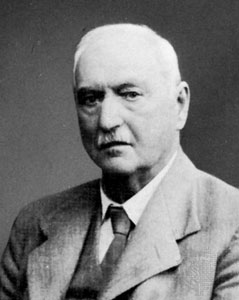 Austin Freeman (Dr Thorndyke) : Richard Austin Freeman (11 April 1862 London - 28 September 1943 Gravesend) — known as R. Austin Freeman — was a British writer of detective stories, mostly featuring the medico-legal forensic investigator Dr Thorndyke. He invented the inverted detective story (a crime fiction in which the commission of the crime is described at the beginning, usually including the identity of the perpetrator, with the story then describing the detective's attempt to solve the mystery) and used some of his early experiences as a colonial surgeon in his novels. A large proportion of the Dr Thorndyke stories involve genuine, but often quite arcane, points of scientific knowledge, from areas such as tropical medicine, metallurgy and toxicology.
Austin Freeman (Dr Thorndyke) : Richard Austin Freeman (11 April 1862 London - 28 September 1943 Gravesend) — known as R. Austin Freeman — was a British writer of detective stories, mostly featuring the medico-legal forensic investigator Dr Thorndyke. He invented the inverted detective story (a crime fiction in which the commission of the crime is described at the beginning, usually including the identity of the perpetrator, with the story then describing the detective's attempt to solve the mystery) and used some of his early experiences as a colonial surgeon in his novels. A large proportion of the Dr Thorndyke stories involve genuine, but often quite arcane, points of scientific knowledge, from areas such as tropical medicine, metallurgy and toxicology.
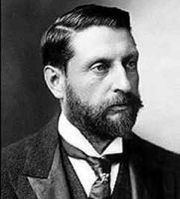 H Rider Haggard : Sir Henry Rider Haggard KBE (22 June 1856 – 14 May 1925), was a prolific English writer of adventure novels set in exotic locations, predominantly Africa, and a founder of the Lost World literary genre. He was also involved in agricultural reform around the British Empire. Haggard is most famous as the author of the novels King Solomon's Mines and its sequel Allan Quatermain, and She and its sequel Ayesha, swashbuckling adventure novels. King Solomon's Mines is sometimes considered the first of the Lost World genre. "She" is generally considered to be one of the classics of imaginative literature and with 83 million copies sold in 1965, it is one of the best-selling books of all time.
H Rider Haggard : Sir Henry Rider Haggard KBE (22 June 1856 – 14 May 1925), was a prolific English writer of adventure novels set in exotic locations, predominantly Africa, and a founder of the Lost World literary genre. He was also involved in agricultural reform around the British Empire. Haggard is most famous as the author of the novels King Solomon's Mines and its sequel Allan Quatermain, and She and its sequel Ayesha, swashbuckling adventure novels. King Solomon's Mines is sometimes considered the first of the Lost World genre. "She" is generally considered to be one of the classics of imaginative literature and with 83 million copies sold in 1965, it is one of the best-selling books of all time.
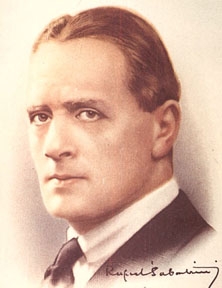 Rafael Sabatini : Rafael Sabatini (April 29, 1875 - February 13, 1950) was an Italian/British writer of novels of romance and adventure. It took Sabatini roughly a quarter of a century of hard work before he attained success with Scaramouche in 1921. This brilliant novel of the French Revolution became an international best-seller. It was followed by the equally successful Captain Blood in 1922. All of his earlier books were rushed into reprints, the most popular of which was The Sea Hawk from 1915. Sabatini was a prolific writer; he produced a new book approximately every year. While he perhaps didn't achieve the mammoth success of Scaramouche and Captain Blood, nonetheless Sabatini still maintained a great deal of popularity with the reading public through the decades that followed. In all, he produced thirty one novels, eight short story collections, six nonfiction books, numerous uncollected short stories, and a play.
Rafael Sabatini : Rafael Sabatini (April 29, 1875 - February 13, 1950) was an Italian/British writer of novels of romance and adventure. It took Sabatini roughly a quarter of a century of hard work before he attained success with Scaramouche in 1921. This brilliant novel of the French Revolution became an international best-seller. It was followed by the equally successful Captain Blood in 1922. All of his earlier books were rushed into reprints, the most popular of which was The Sea Hawk from 1915. Sabatini was a prolific writer; he produced a new book approximately every year. While he perhaps didn't achieve the mammoth success of Scaramouche and Captain Blood, nonetheless Sabatini still maintained a great deal of popularity with the reading public through the decades that followed. In all, he produced thirty one novels, eight short story collections, six nonfiction books, numerous uncollected short stories, and a play.
 Wilkie Collins : William Wilkie Collins (January 8, 1824 – September 23, 1889) was an English novelist, playwright, and author of short stories. He was hugely popular in his time and wrote 27 novels, more than 50 short stories, at least 15 plays, and over 100 pieces of non-fiction work. His best-known works are The Woman in White, The Moonstone, Armadale and No Name. His works were classified at the time as 'sensation novels', a genre seen nowadays as the precursor to detective fiction and suspense fiction. After The Moonstone, Collins's novels contained fewer thriller elements and more social commentary. The subject matter continued to be sensational, but his popularity declined. Algernon Charles Swinburne commented: "What brought good Wilkie's genius nigh perdition? Some demon whispered - 'Wilkie! have a mission.'
Wilkie Collins : William Wilkie Collins (January 8, 1824 – September 23, 1889) was an English novelist, playwright, and author of short stories. He was hugely popular in his time and wrote 27 novels, more than 50 short stories, at least 15 plays, and over 100 pieces of non-fiction work. His best-known works are The Woman in White, The Moonstone, Armadale and No Name. His works were classified at the time as 'sensation novels', a genre seen nowadays as the precursor to detective fiction and suspense fiction. After The Moonstone, Collins's novels contained fewer thriller elements and more social commentary. The subject matter continued to be sensational, but his popularity declined. Algernon Charles Swinburne commented: "What brought good Wilkie's genius nigh perdition? Some demon whispered - 'Wilkie! have a mission.'
 Jeffrey Farnol : John Jeffery Farnol (February 10, 1878 – August 9, 1952), was an English author, known for his many romantic novels, some formulaic and set in the English Regency period, and swashbucklers. Along with Georgette Heyer, he founded the Regency romantic genre; one of his first books, The Broad Highway, has been issued in a version edited by Barbara Cartland. The success of his early novels led Farnol to become a professional writer; he returned to England around 1910, and settled on the south coast. He produced around 40 novels and volumes of stories, and some non-fiction and children's books. He died after a long battle with cancer. His last book was completed by his second wife Phyllis (nee Clarke), whom he had married in 1938.
Jeffrey Farnol : John Jeffery Farnol (February 10, 1878 – August 9, 1952), was an English author, known for his many romantic novels, some formulaic and set in the English Regency period, and swashbucklers. Along with Georgette Heyer, he founded the Regency romantic genre; one of his first books, The Broad Highway, has been issued in a version edited by Barbara Cartland. The success of his early novels led Farnol to become a professional writer; he returned to England around 1910, and settled on the south coast. He produced around 40 novels and volumes of stories, and some non-fiction and children's books. He died after a long battle with cancer. His last book was completed by his second wife Phyllis (nee Clarke), whom he had married in 1938.
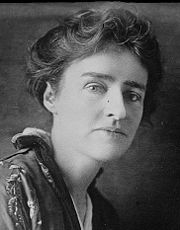 Jean Webster Jean Webster (pseudonym for Alice Jane Chandler Webster) (July 24, 1876 to June 11, 1916), was an American writer and author of many books including Daddy-Long-Legs and Dear Enemy.
Jean Webster Jean Webster (pseudonym for Alice Jane Chandler Webster) (July 24, 1876 to June 11, 1916), was an American writer and author of many books including Daddy-Long-Legs and Dear Enemy.
Her most well-known books feature lively and likeable young female protagonists who come of age intellectually, morally, and socially, but with enough humor, snappy dialogue, and gently biting social commentary to make her books palatable and enjoyable to contemporary readers.
 Louisa M Alcott: Louisa May Alcott (November 29, 1832 – March 6, 1888) was an American novelist. She is best known for the novel Little Women, written and set in the Alcott family home, Orchard House in Concord, Massachusetts and published in 1868. This novel is loosely based on her childhood experiences with her three sisters.
Louisa M Alcott: Louisa May Alcott (November 29, 1832 – March 6, 1888) was an American novelist. She is best known for the novel Little Women, written and set in the Alcott family home, Orchard House in Concord, Massachusetts and published in 1868. This novel is loosely based on her childhood experiences with her three sisters.
As an adult, Alcott was an abolitionist and a feminist. Poverty made it necessary for Alcott to go to work at an early age as an occasional teacher, seamstress, governess, domestic helper, and writer. Alcott produced moralistic and wholesome stories for children under her own name and passionate, fiery novels and sensation stories under the nom de plume A. M. Barnard.
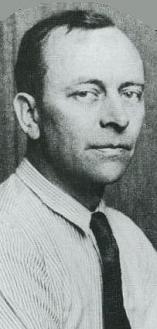 Max Brand : Frederick Faust, aka Max Brand (May 29, 1892 – May 12, 1944) was an American author known primarily for his thoughtful and literary Westerns. Faust wrote mostly under pen names, but today is primarily known by only one, Max Brand. Others include George Owen Baxter, George Evans, David Manning, John Frederick, Peter Morland, George Challis, and Frederick Frost.
Max Brand : Frederick Faust, aka Max Brand (May 29, 1892 – May 12, 1944) was an American author known primarily for his thoughtful and literary Westerns. Faust wrote mostly under pen names, but today is primarily known by only one, Max Brand. Others include George Owen Baxter, George Evans, David Manning, John Frederick, Peter Morland, George Challis, and Frederick Frost.
His love for mythology was a constant source of inspiration, and probably accounted for his success at genre fiction.
Faust managed a massive outpouring of fiction, rivaling Edgar Wallace and Isaac Asimov as one of the most prolific authors of all time. He wrote more than 500 novels for magazines and almost as many stories of shorter length. His total literary output is estimated to have been between 25,000,000 and 30,000,000 words.
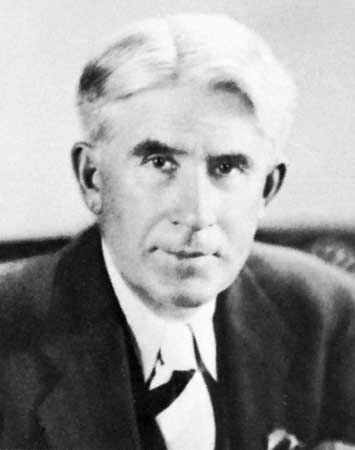 Zane Grey : Zane Grey (January 31, 1872 – October 23, 1939) was an American author best known for his popular adventure novels and stories that presented an idealized image of the rugged Old West. As a boy, Grey was an avid reader who stoked his imagination with adventure stories (Robinson Crusoe and Leatherstocking Tales) and dime novels (featuring Buffalo Bill and "Deadwood Dick"). As an adult, Grey read Owen Wister’s great Western novel The Virginian. After studying its style and structure in detail, he decided to write a full-length story. After several disappointing starts, Grey wrote his first Western, The Heritage of the Desert. It quickly became a bestseller. Two years later Grey produced his best-known book, Riders of the Purple Sage (1912), his all-time best-seller, and one of the most successful Western novels ever. He went on to author over 90 books, some published posthumously and/or based on serials originally published in magazines. His total book sales exceed 40 million.
Zane Grey : Zane Grey (January 31, 1872 – October 23, 1939) was an American author best known for his popular adventure novels and stories that presented an idealized image of the rugged Old West. As a boy, Grey was an avid reader who stoked his imagination with adventure stories (Robinson Crusoe and Leatherstocking Tales) and dime novels (featuring Buffalo Bill and "Deadwood Dick"). As an adult, Grey read Owen Wister’s great Western novel The Virginian. After studying its style and structure in detail, he decided to write a full-length story. After several disappointing starts, Grey wrote his first Western, The Heritage of the Desert. It quickly became a bestseller. Two years later Grey produced his best-known book, Riders of the Purple Sage (1912), his all-time best-seller, and one of the most successful Western novels ever. He went on to author over 90 books, some published posthumously and/or based on serials originally published in magazines. His total book sales exceed 40 million.
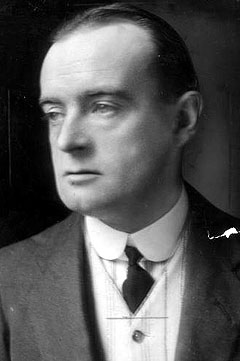 H H Munro (Saki) : Hector Hugh Munro (December 18, 1870 – November 13, 1916), better known by the pen name Saki, was a British writer, whose witty and sometimes macabre stories satirized Edwardian society and culture. He is considered a master of the short story and is often compared to O. Henry and Dorothy Parker.
H H Munro (Saki) : Hector Hugh Munro (December 18, 1870 – November 13, 1916), better known by the pen name Saki, was a British writer, whose witty and sometimes macabre stories satirized Edwardian society and culture. He is considered a master of the short story and is often compared to O. Henry and Dorothy Parker.
His tales feature delicately drawn characters and finely judged narratives. "The Open Window" may be his most famous, with a closing line ("Romance at short notice was her speciality") that has entered the lexicon.
He was influenced by Oscar Wilde, Lewis Carroll, and Kipling, and himself influenced A. A. Milne, Noël Coward, and P. G. Wodehouse.
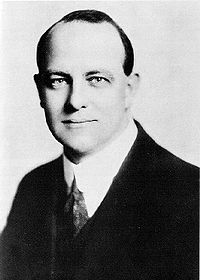 P G Wodehouse : Sir Pelham Grenville Wodehouse, KBE (15 October 1881 – 14 February 1975) was a comic writer who enjoyed enormous popular success during a career of more than seventy years and continues to be widely read. Wodehouse's main canvas was that of pre-war English upper-class society, reflecting his birth, education, and youthful writing career. Wodehouse's "mentally negligible" good-natured characters, such as Bertie Wooster and Freddie Threepwood, invariably make their lot worse by their half-witted schemes to improve a bad situation. Another stock character in his books is the "fixer" whose genius soars above the incompetence of the other characters, Jeeves, Lord Ickenham ("Uncle Fred"), Galahad Threepwood, and Psmith being the bext examples.
P G Wodehouse : Sir Pelham Grenville Wodehouse, KBE (15 October 1881 – 14 February 1975) was a comic writer who enjoyed enormous popular success during a career of more than seventy years and continues to be widely read. Wodehouse's main canvas was that of pre-war English upper-class society, reflecting his birth, education, and youthful writing career. Wodehouse's "mentally negligible" good-natured characters, such as Bertie Wooster and Freddie Threepwood, invariably make their lot worse by their half-witted schemes to improve a bad situation. Another stock character in his books is the "fixer" whose genius soars above the incompetence of the other characters, Jeeves, Lord Ickenham ("Uncle Fred"), Galahad Threepwood, and Psmith being the bext examples.
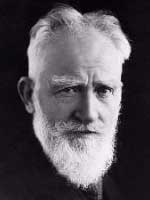 George Bernard Shaw: George Bernard Shaw (26 July 1856 – 2 November 1950) was an Irish playwright. Although his first profitable writing was music and literary criticism, his main talent was for drama, and he wrote more than 60 plays. Nearly all his writings deal sternly with prevailing social problems, but have a vein of comedy to make their stark themes more palatable. Shaw examined education, marriage, religion, government, health care and class privilege. Shaw's plays, like those of Oscar Wilde, were fraught with incisive humor, which was exceptional among playwrights of the Victorian era; both authors are remembered for their comedy. However, Shaw's wittiness should not obscure his important role in revolutionizing British drama. In the Victorian Era, the London stage had been regarded as a place for frothy, sentimental entertainment. Inspired by Henrik Ibsen, Shaw made it a forum for considering moral, political and economic issues, possibly his most lasting and important contribution to dramatic art.
George Bernard Shaw: George Bernard Shaw (26 July 1856 – 2 November 1950) was an Irish playwright. Although his first profitable writing was music and literary criticism, his main talent was for drama, and he wrote more than 60 plays. Nearly all his writings deal sternly with prevailing social problems, but have a vein of comedy to make their stark themes more palatable. Shaw examined education, marriage, religion, government, health care and class privilege. Shaw's plays, like those of Oscar Wilde, were fraught with incisive humor, which was exceptional among playwrights of the Victorian era; both authors are remembered for their comedy. However, Shaw's wittiness should not obscure his important role in revolutionizing British drama. In the Victorian Era, the London stage had been regarded as a place for frothy, sentimental entertainment. Inspired by Henrik Ibsen, Shaw made it a forum for considering moral, political and economic issues, possibly his most lasting and important contribution to dramatic art.